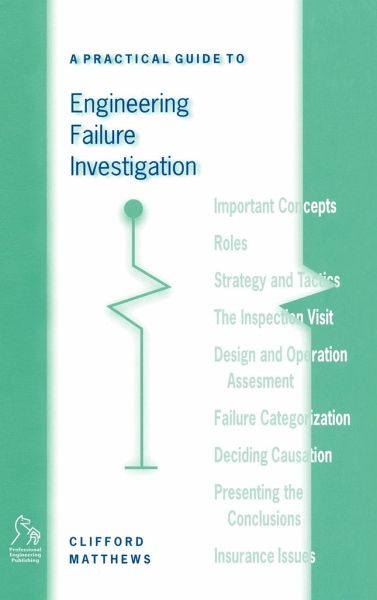
A Practical Guide to Engineering Failure Investigation
Versandkostenfrei!
Versandfertig in über 4 Wochen
232,99 €
inkl. MwSt.

PAYBACK Punkte
116 °P sammeln!
A Practical Guide to Engineering Failure Investigation has been written with the specific purpose of helping those involved in serious engineering failures. When mechanical plant fails, the technical, legal and contractual issues become very involved and complicated, and deciding causation can be difficult and prolonged. The principles and methodologies explained here will help engineers to link their technical knowledge to the commercial realities of working with insurers, loss adjusters and their representatives. This book is essential reading for consultants, expert witnesses and all engine...
A Practical Guide to Engineering Failure Investigation has been written with the specific purpose of helping those involved in serious engineering failures. When mechanical plant fails, the technical, legal and contractual issues become very involved and complicated, and deciding causation can be difficult and prolonged. The principles and methodologies explained here will help engineers to link their technical knowledge to the commercial realities of working with insurers, loss adjusters and their representatives. This book is essential reading for consultants, expert witnesses and all engineers who may become involved in commercial failure investigations. CONTENTS INCLUDE: * How to use this book * Professional roles and responsibilities * Strategy and tactics of failure investigation * The inspection visit * Doing a design and operation appraisal * Mechanisms of failure * Deciding causation * How to present your conclusions * Insurance investigations - deferring failure 'events' and proximate cause - subrogation.




